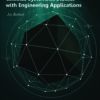Homotopy theory, which is the main part of algebraic topology, studies topological objects up to homotopy equivalence. Homotopy equivalence is weaker relations than topological equivalence, i.e., homotopy classes of spaces are larger than homeomorphism classes. Even though the ultimate goal of topology is to classify various classes of topological spaces up to a homeomorphism, in algebraic topology, homotopy equivalence plays a more important role than homeomorphism, essentially because the basic tools of algebraic topology (homology and homotopy groups) are invariant with respect to homotopy equivalence, and do not distinguish topologically nonequivalent, but homotopic objects.
The idea of homotopy can be turned into a formal category of category theory. The homotopy category is the category whose objects are topological spaces, and whose morphisms are homotopy equivalence classes of continuous maps. Two topological spaces X and Y are isomorphic in this category if and only if they are homotopy-equivalent. Then a functor on the category of topological spaces is homotopy invariant if it can be expressed as a functor on the homotopy category.
Based on the concept of the homotopy, computation methods for algebraic and differential equations have been developed. The methods for algebraic equations include the homotopy continuation method and the continuation method. The methods for differential equations include the homotopy analysis method.
In practice, there are technical difficulties in using homotopies with certain spaces. Algebraic topologists work with compactly generated spaces, CW complexes, or spectra. This book deals with homotopy theory, one of the main branches of algebraic topology.













